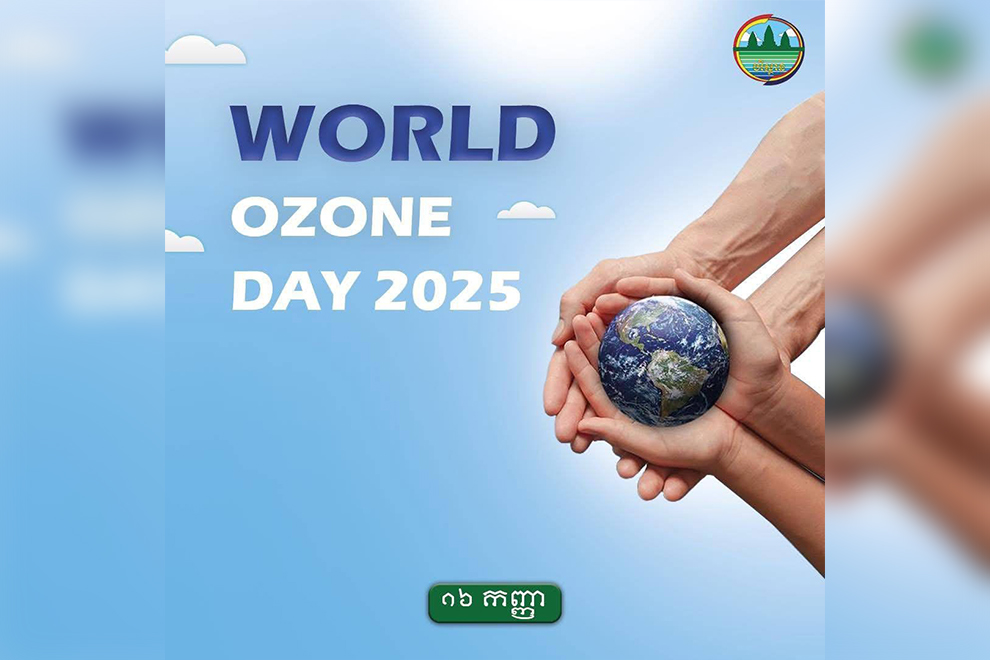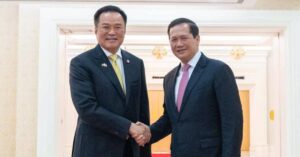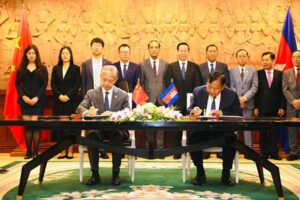Ozone layer facing ongoing threats, warns environment minister
The ozone layer, which plays a vital role in shielding the Earth from the sun’s harmful radiation, is slowly recovering, but destructive substances threaten to undo the previous work done in restoring the invaluable protection.
Minister of Environment Eang Sophalleth highlighted this ongoing issue on September 16, during World Ozone Day, themed “From Science to Global Action”. The theme reflects how scientific discovery has translated into concrete global action, guiding targeted policies and effective implementation to protect the ozone layer — Earth’s most important protective shield.
The minister stressed that World Ozone Day is more than a slogan; it demonstrates the role of science in addressing shared environmental challenges.
He noted that ozone-depleting substances are commonly found in spray cans and cooling equipment, including chlorofluorocarbons (CFCs) and hydrochlorofluorocarbons (HCFCs). Beyond damaging the ozone layer, these substances also have a high potential to increase global warming.
“This year’s celebration also aims to raise greater public awareness of the importance of the ozone layer for life on Earth, and to encourage stronger participation in protecting it while reducing global warming for the sake of the environment and public health,” he said.
Since 1995, the Ozone Secretariat of the UN Environment Programme has designated September 16 as World Ozone Day to commemorate the adoption of the Montreal Protocol and to celebrate collective achievements and progress made in protecting the ozone layer and reducing global warming. These agreements are seen as outstanding examples of how scientists, diplomats and policymakers can unite to solve global environmental challenges.
The Vienna Convention and the Montreal Protocol clearly show how science provides the knowledge and evidence to enable effective global cooperation.
Through joint scientific research and coordinated action under the Montreal Protocol, nations around the world have significantly reduced, and in some cases eliminated, the use of ozone-depleting substances.
Between 1990 and 2010 alone, around 135 billion tonnes of carbon emissions were avoided under the Protocol. As a result, since 2000 the ozone layer has been recovering at a rate of about 1–3 per cent per year, while also helping to slow global warming.
Both the Vienna Convention and the Montreal Protocol are widely regarded as two of the most successful global environmental treaties in reducing and eliminating ozone-depleting and cooling substances, compared with other multilateral conventions and agreements. They have put the ozone layer on a path toward restoration, thereby safeguarding all life on Earth.
As a party to the treaties, Cambodia completely phased out CFCs in 2010 and continues to implement its HCFC management plan, in line with obligations under the Montreal Protocol.
More recently, the Royal Government adopted the Environmental and Natural Resources Code and the Environmental Sector Strategic Plan 2023–2028, which outlines three main strategies: clean, green and sustainable. Among these, clean air has been prioritised.
To this end, Cambodia has installed nationwide air quality monitoring stations, regularly publishes data online and through mobile apps, and enforces strict measures to curb air pollution from open burning of solid waste, agricultural residues, forest fires and both mobile and stationary pollution sources.
Cambodia has also ratified the Kigali Amendment to the Montreal Protocol on April 8, 2021, and developed an HFC management plan, in the hope that global implementation could help limit warming by up to 0.5°C by the end of this century.
The minister reaffirmed Cambodia’s commitment to continue working with the international community to fulfil all obligations toward reducing and eliminating ozone-depleting substances and high global-warming-potential chemicals.
Despite progress in renewable energy and energy efficiency, he stressed that much remains to be done — particularly in public education, promoting the use of non-ozone-depleting, energy-efficient, and low- or zero-global-warming-potential technologies, expanding renewable energy and raising awareness so citizens understand their role in protecting the environment.
He added that countries should also adopt stronger regulations, such as energy-efficient building codes and advanced cooling technologies, while accelerating renewable energy use on a wide scale.
Source: Phnom Penh Post





